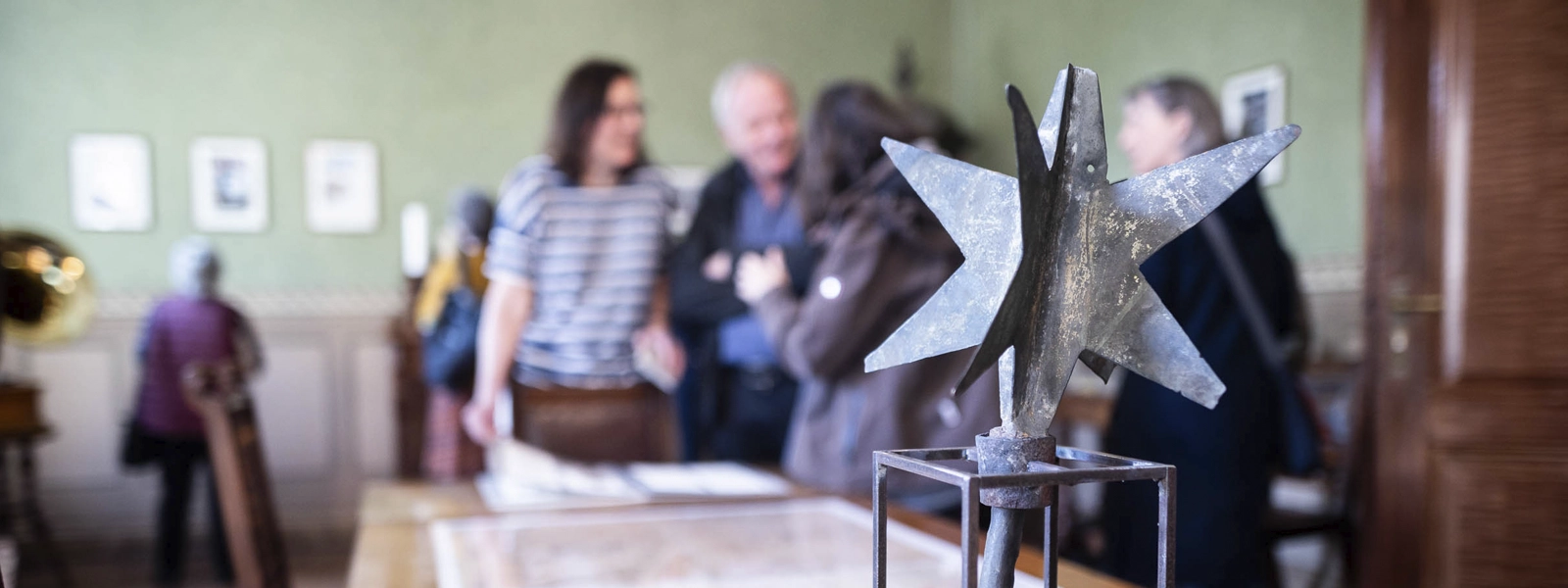
"A woman builds a church"
In 1751/52, in just two years, the lady of the manor Caroline Marianne von Marschall had a new church built in memory of her deceased husband Samuel von Marschall on the foundations of the dilapidated half-timbered church in the middle of the village of Altranft. In the dining room we present the production "A woman builds a church" by Antje Scholz and Lars Fischer on the history of the patron saint's church. Old building plans, 10 photographs by Alex Schirmer and an artist's book by Mathilde Scholz, all arranged around the old, shot-up church knob, which was removed in 2004, provide an insight into the eventful building history of the village church.
Room Archive

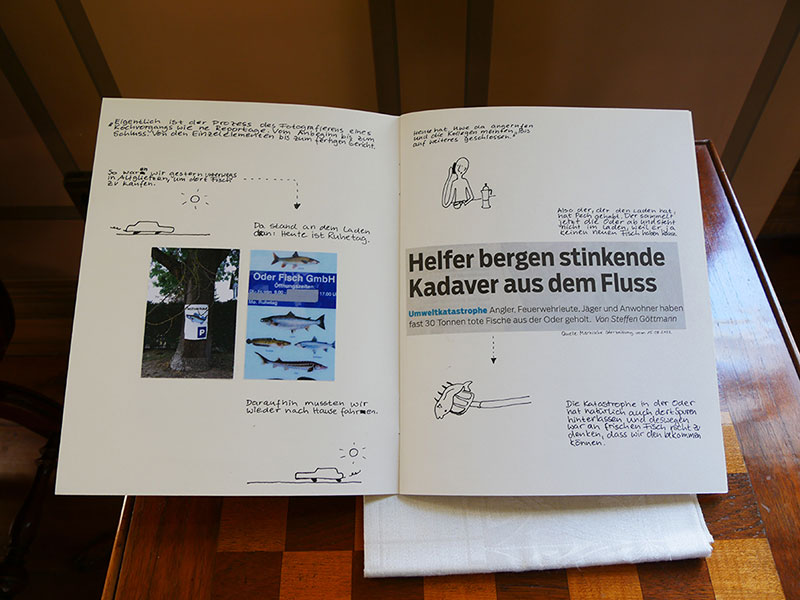
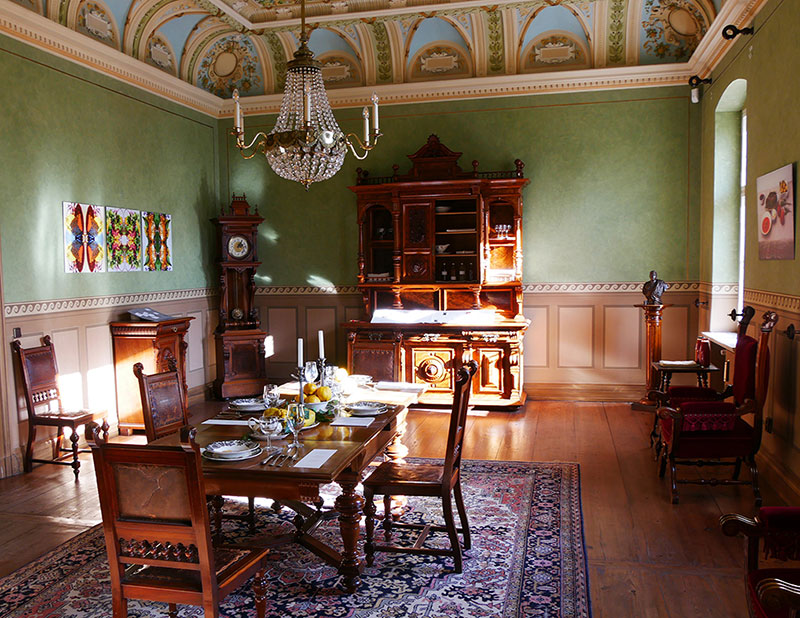
2022-23 "F(r)ish & Game: The Taste of Breakage".
in the context of Kulturland Brandenburg's theme year 2022 "The Art of Living
The former abundance of fish in the Oderbruch is legendary: old catch lists from around 1800 count 47 species native to the Oder, from eel to dwarf stickleback. As for the game population, it is said that red deer, wild boar, roe deer and brown hare dominated as hunting game. This abundance has influenced the traditional cuisine in the Oderbruch. And today? What can be served today with fish and game and with side dishes from the landscape of the Oderbruch? What about other animals? Three cook-photographer duos from the Oderbruch have pursued these questions, prepared multi-course dishes and photographed them in very different ways. The result was eight large-format photographs for the dining room in Altranft Castle: classic, magical, political. We "tasted" from the pictures in the dining room, which was specially dressed in an appropriate ambience.
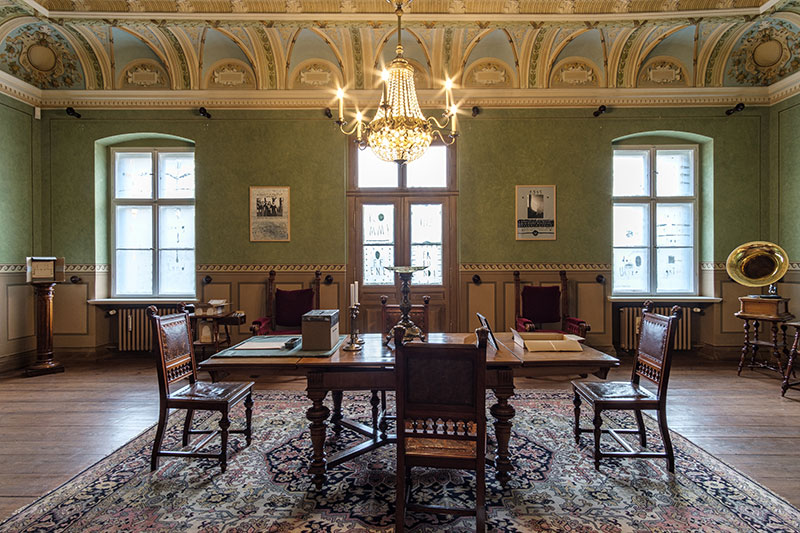

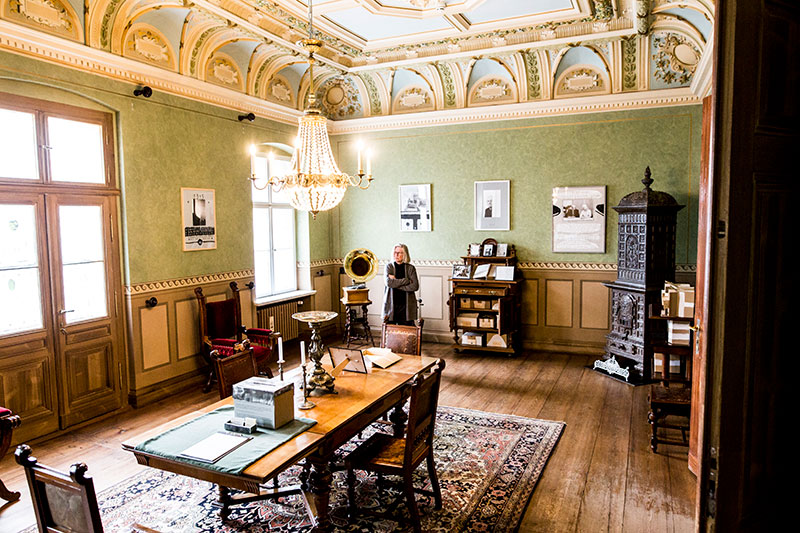
2019-2022 Dining Hall, Transformed, notebooks from 1876 to present in the Altranfter Dining Hall.
Memories of the residents and visitors collected in cardboard boxes by Christiane Wartenberg. On the walls, a graphic reconstruction of the various phases of development of the dining hall - from the Counts Hacke to the time of the Eschenbachs and the GDR House of Culture to the Altranft Open Air Museum and the current Oderbruch Museum.
During the term, Wartenberg worked one day each week in the dining room, conducting interviews and engaging in conversation with visitors. In this way, the history of the room and its furniture was gradually condensed.
In its third year, the three-year intervention entered its final phase with "The Dining Room in Floral Splendor". The artist from Ortwig presented the Loose Art books that had been created in recent years in an examination of the history of Altranft Castle and - supported by our visitor advisor Barbara Strenzel - connected with bouquets of flowers to Else Eschenbach's habit of making the manor house friendly and inviting with flowers.
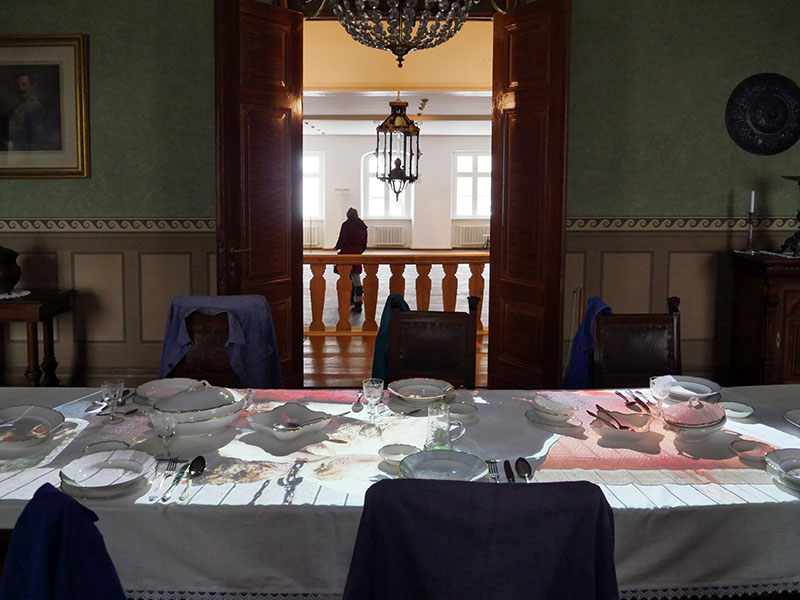


2018 Zwischenraum - A Space Installation by Kerstin Baudis
Inside and outside, house and landscape, poor and rich - everything is connected.
For the annual theme of agriculture 2018, artist Kerstin Baudis explored the question of how land use in and around Altranft has changed the cultural landscape and the way people live together over time. She talked to people in the village, explored the landscape, did research. As a result, she used the existing furniture in the stately rooms of the castle to build walk-in interstitial spaces that reveal the loss and gain of cultural landscape dynamics.
In four interventions in the castle, she addressed the various facets of manorial agriculture - from the production of wealth to poverty, flight and the present - and found opportunities for creative counterparts in the fisherman's house. Just as it was visible in the manor house that wealth was sweated out through farm labor, it was now possible to see in the farm worker's house how the silverware escaped through the black kitchen's chimney and what labor time went into a bushel of grain. Kerstin Baudis' work, however, was not primarily about social injustice; above all, it established the connection between the different parts of the museum. The outside was reflected in the inside, the inside was turned inside out. This created the perception of an in-between space.
Kerstin Baudis' work was very valuable for the development of the museum. Not only did she enrich the annual theme with many interesting room installations, she also gave the museum an impulse for further courageous handling of the rooms that had been created during the time of the open-air museum. Respecting their character, but nevertheless introducing one's own questions and uses, has since succeeded in many places.